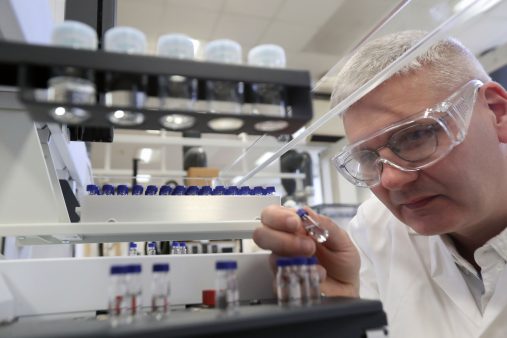A clean approach to water disinfection
26 July 2021
Undoubtedly some of the greatest challenges of this century will revolve around the adequate provision of clean water. An estimated 5.7 billion people will live under the threat of water-scarcity by 2050,1 driven largely by increasing urbanisation, rapid population growth and climate change, it is essential that water sanitation infrastructure and services are adapted to ensure sustainability and resilience.

In communities that have limited or no access to water decontamination this is of utmost importance. Approaches that promote a localised circular water economy will be favoured, minimising financial and environmental costs.2,3
There are growing health concerns associated with chlorination by-products and this will likely lead to a major overhaul in existing water infrastructure and a shift towards approaches that avoid the formation of harmful chemical residues. Hydrogen Peroxide (H2O2) would theoretically be an attractive alternative to chlorination, however the use of toxic stabilizing agents designed to prolong shelf-life would prevent the application of commercially generated Hydrogen Peroxide in water treatment.
The Hutchings’ Research Group, part of the Cardiff Catalysis Institute, has been focused on the direct synthesis of Hydrogen Peroxide since 2002.3 The original aim was to develop novel materials that would allow for the on-site production of this environmentally friendly oxidant and has resulted in the development of a large library of highly efficient catalytic materials for Hydrogen Peroxide synthesis4,5
Motivated by the impact of disasters in the Caribbean and New Orleans in 2005, the Hutchings’ Research Group set out to build on their understanding of Hydrogen Peroxide synthesis, developing technologies that would allow for the on-site treatment of contaminated water providing clean, drinkable water to the poorest nations around the world.

As part of a multi-disciplinary and multi-national research team that involves chemists, microbiologist, surface scientists and microscopists from Cardiff University and beyond, in addition to their industrial collaborators Welsh Water, the team have demonstrated that the generation of Hydrogen Peroxide, over gold-palladium catalysts, and more importantly surface bound reactive oxygen species is quicker and better at killing viruses and bacteria. Providing an instant method of cleaning water that is 10 million times better at killing the bacteria than the industrial hydrogen peroxide, and more than 100 million times more effective than the chlorine.
While this technology is in its infancy, the team are excited by its potential to revolutionise water disinfection, promoting a chemical free route to disinfection and allowing for water treatment in remote regions that lack traditional water treatment infrastructure. They plan to move towards a commercially viable prototype in the near future.
The study was led by Cardiff University’s school of chemistry and school of pharmacy and pharmaceutical sciences, accompanied by researchers from Swansea University, Lehigh University, National University of Singapore, the University of Bath, and Welsh Water.
Cardiff Catalysis Institute will be moving into a bespoke Translational Research Hub on Cardiff Innovation Campus in 2022, complete with state-of-the-art labs, a microscopy unit and a suite of new offices.
Further details can be found by clicking here